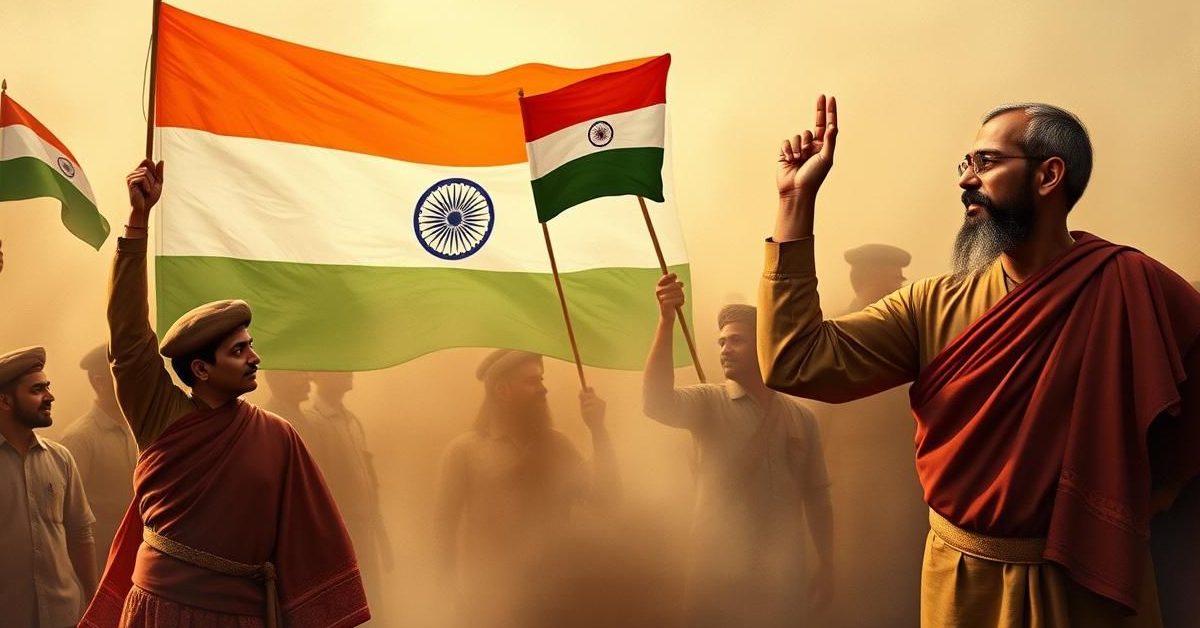Boost your UPSC Civil Services Exam preparation with a deep dive into Indian History and Culture. This daily quiz highlights crucial facts about freedom fighters, landmark historical events, and significant cultural landmarks, providing essential knowledge for aspirants.
Architects of Reform and Resistance
Gopal Ganesh Agarkar, a prominent freedom fighter, made significant contributions to social reform. He launched the newspaper `Sudharak` (The Reformer), using it as a platform to challenge prevalent issues like untouchability and casteism. Agarkar, alongside Bal Gangadhar Tilak, was also instrumental in founding the Deccan Educational Society in Pune.
Another key figure in India’s freedom struggle was Yusuf Meherally. He is credited with coining two of the most powerful slogans of the independence movement: “Quit India” and “Simon Go Back.” These rallying cries galvanized millions across the nation.
Defining Moments and Leadership
The year 1942 saw the arrival of the Cripps Mission in India, led by Sir Stafford Cripps. This mission, pressured by global leaders like US President Franklin D. Roosevelt and Chinese President Chiang Kai-shek, aimed to secure Indian cooperation in World War II. However, its offer of only ‘dominion status’ rather than full independence, and a provision for potential partition, was rejected by the Indian National Congress.
Khan Abdul Gaffar Khan, famously known as the “Frontier Gandhi,” dedicated his life to the social upliftment of the Pukhtun community. He is revered for his close association with Mahatma Gandhi and for leading the `Khudai Khidmatgar` (Servants of God) movement. This non-violent campaign, active from 1930 to 1947, remains one of the most successful Gandhian movements globally.
Voices of a Nation
Iconic speeches played a pivotal role in inspiring the Indian populace during the freedom movement. Subhash Chandra Bose delivered his famous rallying cry, “Give me blood and I promise you freedom,” to members of his Indian National Army in Burma in 1944.
Following the tragic assassination of Mahatma Gandhi in 1948, it was Jawaharlal Nehru who addressed the nation with the deeply moving words, “The light has gone out of our lives.” This speech encapsulated the profound grief and sense of loss felt by the entire country.
Cultural Heritage and Ancient Treasures
India is home to the stunning Lotus Temple in Delhi, one of the ten Baha’i Houses of Worship worldwide. Completed in 1986, this architectural marvel was designed by Iranian architect Fariborz Sahba, who drew inspiration from the rock-cut architecture of the Ajanta and Ellora Caves for its distinctive lotus motif.
From the ancient Indus Valley Civilization, the iconic “Dancing Girl” figurine stands as a testament to early Indian artistry. This bronze statue was first unearthed in 1926 by British archaeologist Ernest McKay during excavations at Mohenjodaro.
- Gopal Ganesh Agarkar founded the `Sudharak` newspaper and co-founded the Deccan Educational Society.
- Yusuf Meherally coined the slogans “Quit India” and “Simon Go Back.”
- The Cripps Mission offered dominion status, not full independence, which was rejected.
- Khan Abdul Gaffar Khan led the non-violent `Khudai Khidmatgar` movement.
- The Lotus Temple’s design was inspired by the Ajanta and Ellora Caves.
- The “Dancing Girl” figurine was discovered by Ernest McKay.
Continue to explore key historical and cultural facts daily to strengthen your knowledge base for the UPSC Civil Services Exam.















